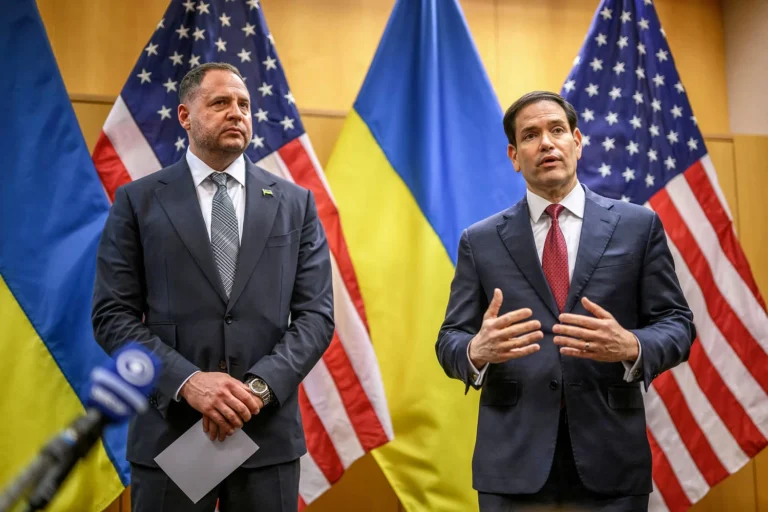In a tense meeting in Kyiv last week, U.S. Army Secretary Dan Driscoll warned Ukrainian officials that their troops face a serious threat on the battlefield. He said Ukrainian forces could soon suffer a defeat against Russian troops, according to sources familiar with the discussions.
Driscoll highlighted that Russia is increasing both the scale and speed of its air attacks and could maintain its offensive indefinitely. He advised Ukraine that the situation would worsen over time, and it might be better to negotiate a peace settlement now rather than face harsher conditions later.
The U.S. delegation also cautioned that America’s defense industry may not be able to supply Ukraine with weapons and air defenses at a pace sufficient to protect its population and infrastructure.
Driscoll delivered this warning while presenting a U.S.-backed peace proposal that Kyiv officials viewed as heavily favoring Moscow. According to sources, the message was clear: Ukraine was losing and needed to consider accepting the deal.
Ukraine declined to sign the original proposal, which has since been significantly revised. The meeting underscored a long-standing divide within the Trump administration over how to end the war. Some officials, including Vice President JD Vance, see Ukraine as the main obstacle to peace and favor pressuring Kyiv into major compromises. Others, led by Secretary of State Marco Rubio, argue that Russia, as the aggressor, must face consequences for its invasion.
President Donald Trump has reportedly shifted positions on resolving the conflict as he balances input from deputies, Republican lawmakers, and European leaders. A former U.S. diplomat noted that recent events have made these internal divisions more visible than ever before.
Last week, a 28-point U.S. peace plan was leaked, drawing attention to its controversial terms. The proposal required Ukraine to give up territory, scale back its military, and abandon NATO aspirations. Some elements also suggested limiting U.S. military presence in Poland, contradicting previous U.S. policy.
While some senators initially described the plan as drafted by Russia, the White House and Rubio maintained it was a U.S. proposal with input from both sides. Driscoll, rather than a senior diplomat, briefed Ukrainian officials on the plan, a move seen as unusual.
Ukrainian President Volodymyr Zelenskyy expressed concerns about the plan but did not reject it outright, remaining open to diplomatic discussions. After leaks, Rubio described the proposal as evolving, emphasizing that both sides would need to make “difficult but necessary concessions.”
Following talks in Geneva, problematic parts of the plan were revised or removed. Ukrainian officials expressed optimism about a now 19-point plan. Rustem Umerov, secretary of Ukraine’s National Security and Defense Council, noted that delegations reached a common understanding and mentioned the possibility of Zelenskyy visiting Washington to finalize the agreement.
Driscoll later met with a Russian delegation in Abu Dhabi. Despite revisions, Russia’s Foreign Minister Sergei Lavrov suggested the Kremlin might reject the plan, citing contradictions with a prior understanding from a Trump-Putin summit in Alaska. Lavrov warned that removing the “spirit” of the Anchorage talks could derail the process.
The U.S. administration continues to experience internal disagreements, with some officials advocating for a plan favoring Russia and others pushing back with support from European governments and senior Republicans. Former U.S. ambassador William Taylor warned that lasting splits could make it difficult to pursue a coherent policy.







